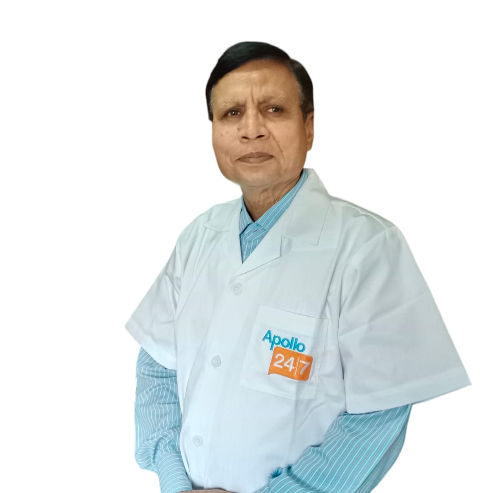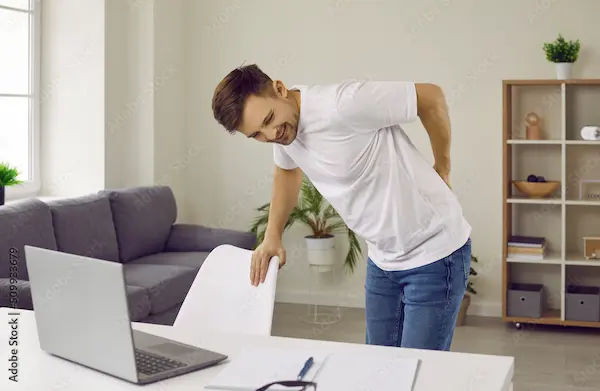Arthritis: Causes, Symptoms, Diagnosis and Treatment
Discover the causes, symptoms, diagnosis, and treatment options for arthritis. Learn how to manage joint pain and improve mobility with effective treatments and lifestyle changes.

Written by
Last updated on 3rd Jul, 2025
Introduction
Arthritis is a general term referring to a group of over 100 conditions that affect the joints, where two bones meet. It leads to inflammation, stiffness, and pain that can worsen over time, affecting daily activities and overall quality of life. While there is no cure for arthritis, various treatments and lifestyle changes can help manage the symptoms and improve mobility.
This article explores the causes, symptoms, diagnosis, and treatment options for arthritis, as well as providing tips for living with the condition.
Understanding the Causes
The causes of arthritis vary depending on the type. In many cases, it results from joint wear and tear, autoimmune conditions, or an imbalance in the body. Key factors include:
Osteoarthritis (OA): The most common form, OA results from the natural wear and tear of the cartilage that cushions the joints. Over time, the cartilage breaks down, causing the bones to rub together, leading to pain and stiffness.
Rheumatoid arthritis (RA): RA is an autoimmune disease where the immune system mistakenly attacks the lining of the joints, leading to inflammation, pain, and potential joint damage.
Gout: Caused by an excess of uric acid in the bloodstream, leading to sharp crystals forming in the joints, most commonly in the big toe, causing sudden, intense pain.
Ankylosing spondylitis: A type of arthritis that primarily affects the spine, causing inflammation in the joints near the lower back and pelvis, leading to pain and stiffness.
Psoriatic arthritis: This type occurs in people who have psoriasis, a skin condition. It causes joint pain, stiffness, and swelling, particularly in the fingers and toes.
Juvenile arthritis: Affects children under 16 years of age, leading to joint pain, swelling, and stiffness, often affecting smaller joints.
Other causes include:
Joint injuries: Previous injuries can increase the likelihood of developing arthritis in that joint later in life.
Infections: Certain infections may trigger viral arthritis, leading to inflammation in the joints.
Genetics: A family history of arthritis can increase the risk of developing it, particularly in rheumatoid arthritis and osteoarthritis.
Common Types of Arthritis
There are more than 100 types of arthritis, but the most common include:
1. Osteoarthritis (OA)
Most common type, usually caused by joint wear and tear.
Affects weight-bearing joints such as knees, hips, and spine.
2. Rheumatoid Arthritis (RA)
An autoimmune condition that causes chronic inflammation in the joints.
Affects the small joints first, such as those in the fingers and wrists.
3. Gout
Caused by high levels of uric acid in the blood, leading to painful crystal formation in joints.
Commonly affects the big toe, but can occur in other joints.
4. Ankylosing Spondylitis
Primarily affects the spine and lower back.
Causes stiffness and pain in the affected joints.
5. Psoriatic Arthritis
Occurs in people with psoriasis.
Affects joints, leading to pain, stiffness, and swelling.
6. Juvenile Arthritis
Affects children and teenagers.
Causes joint pain and swelling, and can impact growth.
Symptoms of Arthritis
The symptoms of arthritis can range from mild to severe and may develop gradually or suddenly. The most common signs include:
Joint pain: Pain can be constant or intermittent and typically worsens with activity.
Stiffness: Difficulty in moving joints, particularly in the morning or after periods of inactivity.
Swelling: Inflamed joints may appear swollen, red, or warm to the touch.
Skin discoloration: In some forms of arthritis, the skin around the joint may change colour.
Tenderness: Joints may be sensitive to touch, causing discomfort when pressure is applied.
Heat or warmth: A feeling of warmth around the affected joint, indicating inflammation.
Diagnosis of Arthritis
Arthritis is diagnosed through a combination of medical history, physical examination, and diagnostic tests. A healthcare provider will typically follow these steps:
1. Clinical Examination
The clinical examination includes:
The doctor will assess the affected joints by checking for signs of inflammation, tenderness, and limited range of motion.
They will ask about the onset of symptoms, including when pain and stiffness first appeared and what activities exacerbate the symptoms.
They may also compare the range of motion in the affected joint to similar joints on the other side of the body.
2. Imaging Tests
Imaging tests provide detailed pictures of the joints, helping to assess the extent of damage. Common imaging tests include:
X-rays: Useful for detecting joint damage, bone changes, and cartilage wear.
Ultrasound: Can detect fluid accumulation and inflammation in the joints.
MRI (Magnetic Resonance Imaging): Provides high-resolution images of soft tissue and bones, allowing for a more detailed evaluation of joint damage.
CT scan: Offers cross-sectional images to assess joint and bone structure.
3. Blood Tests
Blood tests can help identify certain types of arthritis and rule out other conditions. Common tests include:
Rheumatoid factor (RF): Used to diagnose rheumatoid arthritis.
Uric acid levels: Elevated uric acid levels indicate gout.
Erythrocyte sedimentation rate (ESR) and C-reactive protein (CRP): Elevated levels suggest inflammation in the body, helping to diagnose inflammatory arthritis.
Antinuclear antibody (ANA) test: Used to diagnose autoimmune forms of arthritis.
Treatment Options
There is no cure for arthritis, but treatments can help manage symptoms, reduce pain, and improve mobility. Treatment depends on the type of arthritis and the severity of the symptoms.
1. Medications
The medications for arthritis are as follows:
Nonsteroidal anti-inflammatory drugs (NSAIDs): OTC or prescription NSAIDs like ibuprofen help reduce pain and inflammation.
Acetaminophen: A pain reliever that does not reduce inflammation but is helpful for mild pain.
Corticosteroids: Prescription medications, either oral or injected, that reduce inflammation.
Disease-modifying antirheumatic drugs (DMARDs): Used for rheumatoid and psoriatic arthritis to slow disease progression.
Biologic drugs: Target specific parts of the immune system, commonly used for rheumatoid arthritis.
2. Physical Therapy
Physical therapy helps to maintain or improve joint function and reduce pain. It involves:
Strengthening exercises: To support joints and prevent further damage.
Range-of-motion exercises: To improve flexibility and movement.
Heat and cold therapy: For pain relief and reducing inflammation.
Occupational therapy can help you manage daily tasks and improve your quality of life by providing tools to ease joint strain.
3. Surgical Interventions
Surgery may be necessary if conservative treatments fail to provide relief. Common surgical options include:
Joint fusion: The bones in the joint are surgically joined, preventing further movement and reducing pain, often used in spinal and ankle joints.
Joint replacement (arthroplasty): A damaged joint is replaced with a prosthesis. This is common in the hips, knees, and shoulders.
Lifestyle and Home Remedies
Managing arthritis symptoms can often be supported by lifestyle adjustments and home remedies:
Weight management: Maintaining a healthy weight reduces stress on weight-bearing joints.
Exercise: Regular, low-impact exercise (e.g., swimming, walking) helps keep joints flexible.
Heat and cold therapy: Using heating pads or ice packs to alleviate pain.
Assistive devices: Canes, braces, and ergonomic tools help relieve joint stress and improve mobility.
Living with Arthritis
Living with arthritis requires managing symptoms through a combination of treatment, lifestyle adjustments, and self-care strategies, allowing individuals to maintain mobility, reduce pain, and improve overall quality of life.
1. Coping Strategies
The coping strategies includes:
Pain management: Focus on managing pain through medication, physical therapy, and lifestyle changes.
Mental health support: Arthritis can take a toll on mental health, so finding emotional support is key.
Pacing yourself: Break tasks into manageable steps and take regular breaks to avoid joint strain..
2. Adaptive Aids and Tools
Adaptive aids and tools for arthritis are:
Mobility aids: Walkers, canes, or knee braces can help with joint stability.
Ergonomic tools: Special utensils, keyboards, and chairs reduce strain on joints.
Conclusion
Arthritis is a chronic condition that can significantly impact daily life, but with the right treatment, many people can manage their symptoms effectively. A combination of medication, physical therapy, lifestyle changes, and, in some cases, surgery, can improve mobility and reduce pain. Ongoing research continues to offer hope for more effective treatments, while lifestyle adaptations and support networks can help individuals live well with arthritis.
Consult Top Orthopaedician
Consult Top Orthopaedician

Dr. Pradeep Lucas
Orthopaedician
7 Years • MBBS, Diploma in Orthopaedics, Fellowship in DFSI
Bengaluru
Revival Multispeciality Clinic, Bengaluru

Dr. Manoj Dinkar
Orthopaedician
15 Years • MBBS, Dip (Orthopaedics)
New Delhi
THE DOCTORS NESST, New Delhi

Dr. Keshav Digga
Orthopaedician
14 Years • MBBS, MS Orthopaedics, FIASM, FIMISS
Kolkata
DIGGA HEALTHCARE, Kolkata

Dr. Padam Singh Gautam
General Physician/ Internal Medicine Specialist
43 Years • M.B.B.S (WARDHA M. S.), F.A.G.E. (MANIPAL), F.A.I.M.S. (Pb.), M.A.I.M.S. (Pb.), M.R.S.H. (LONDON)
Noida
Dr Padam Singh Gautam Fracture Clinic, Noida
(50+ Patients)

Dr. Anindya Dutt
Orthopaedician
7 Years • MBBS, DNB (Orthopaedics), Fellowship in Joint Replacement, Fellowship in Paediatric Orthopaedics
Kolkata
Dr Anindya Dutt's Clinic, Kolkata

